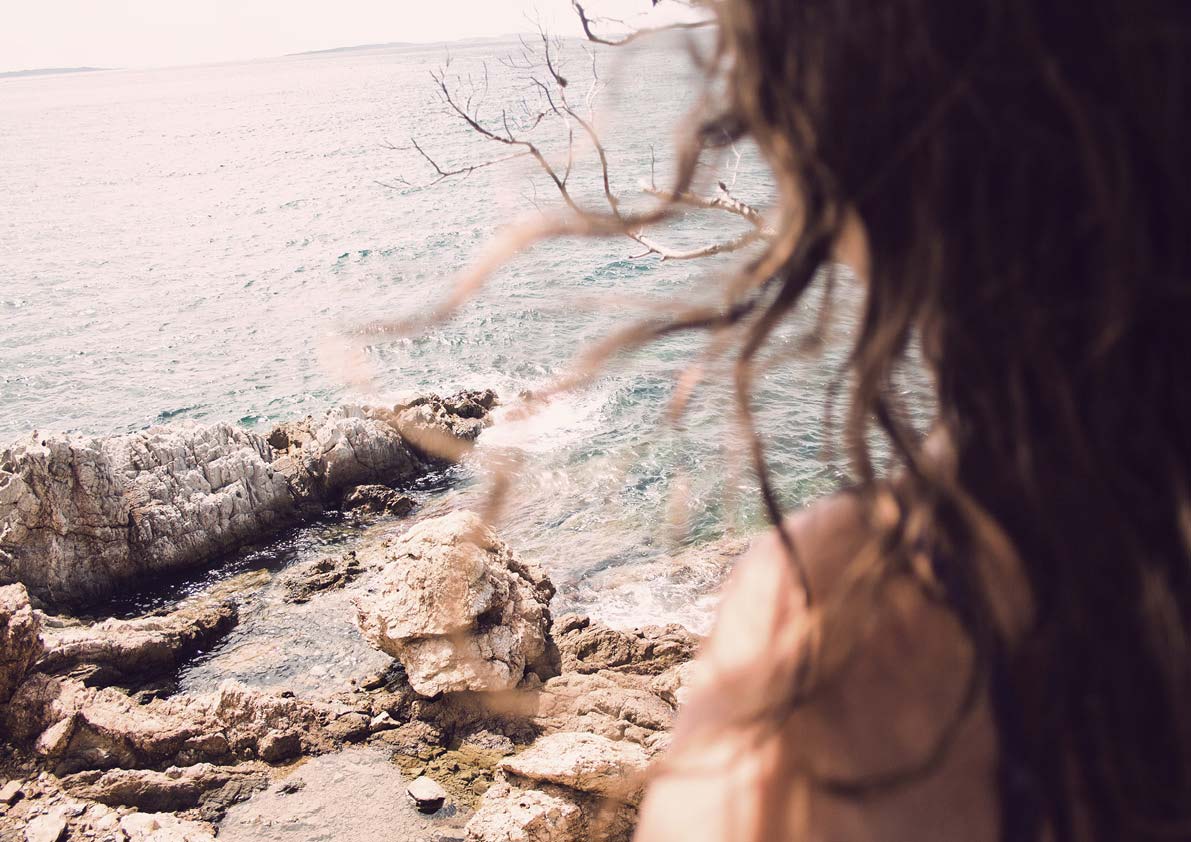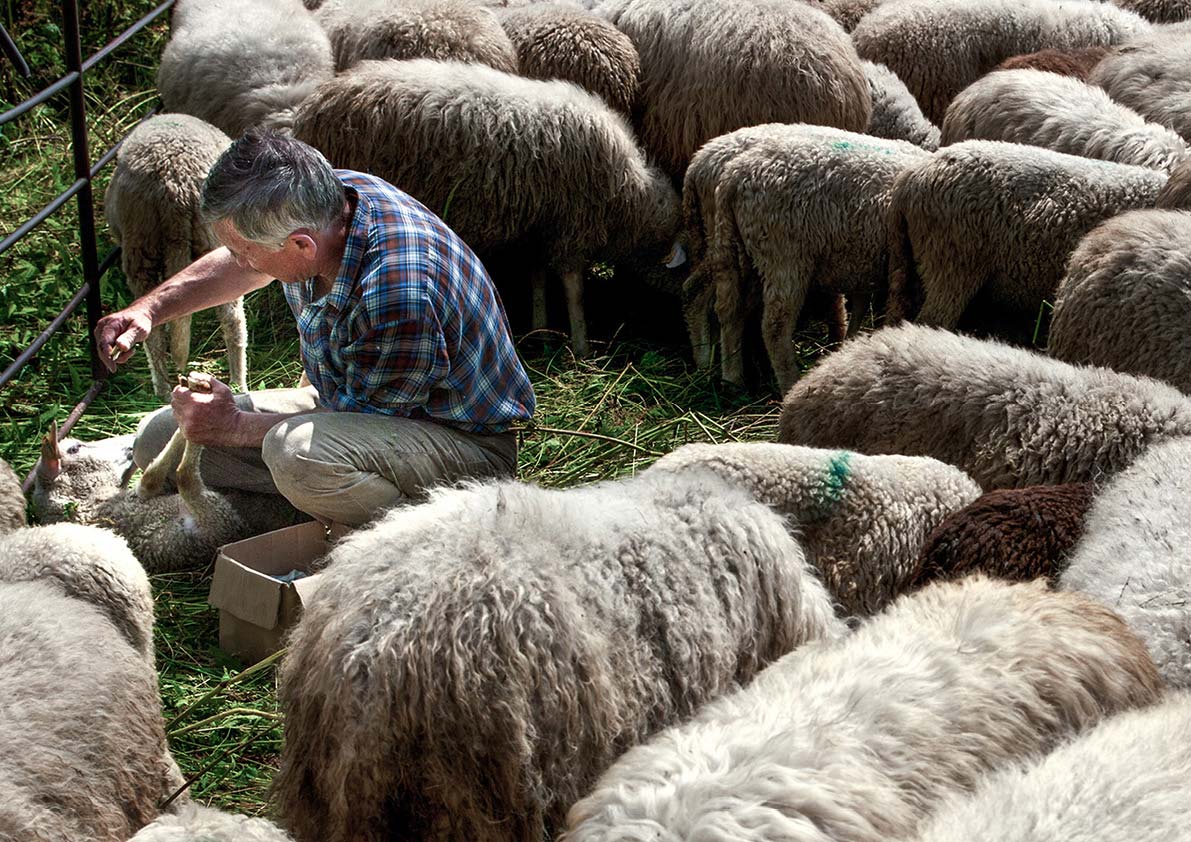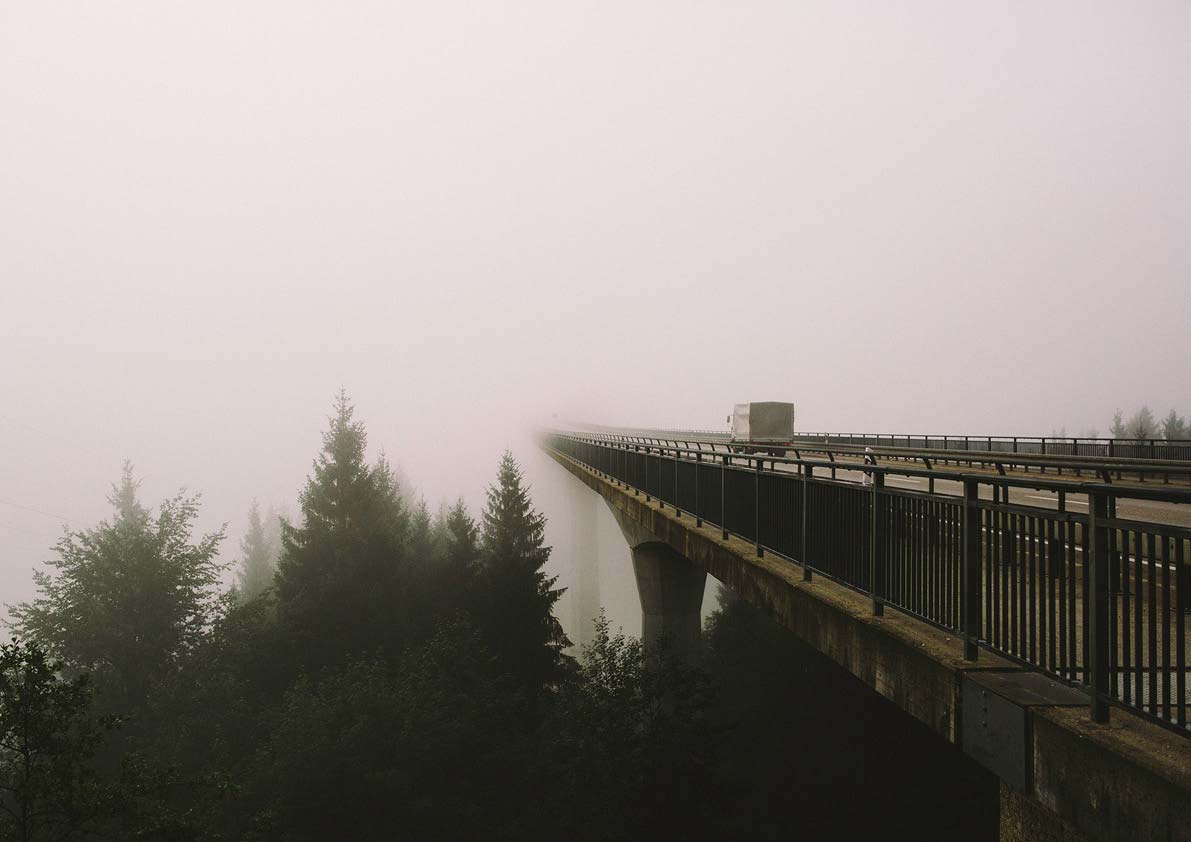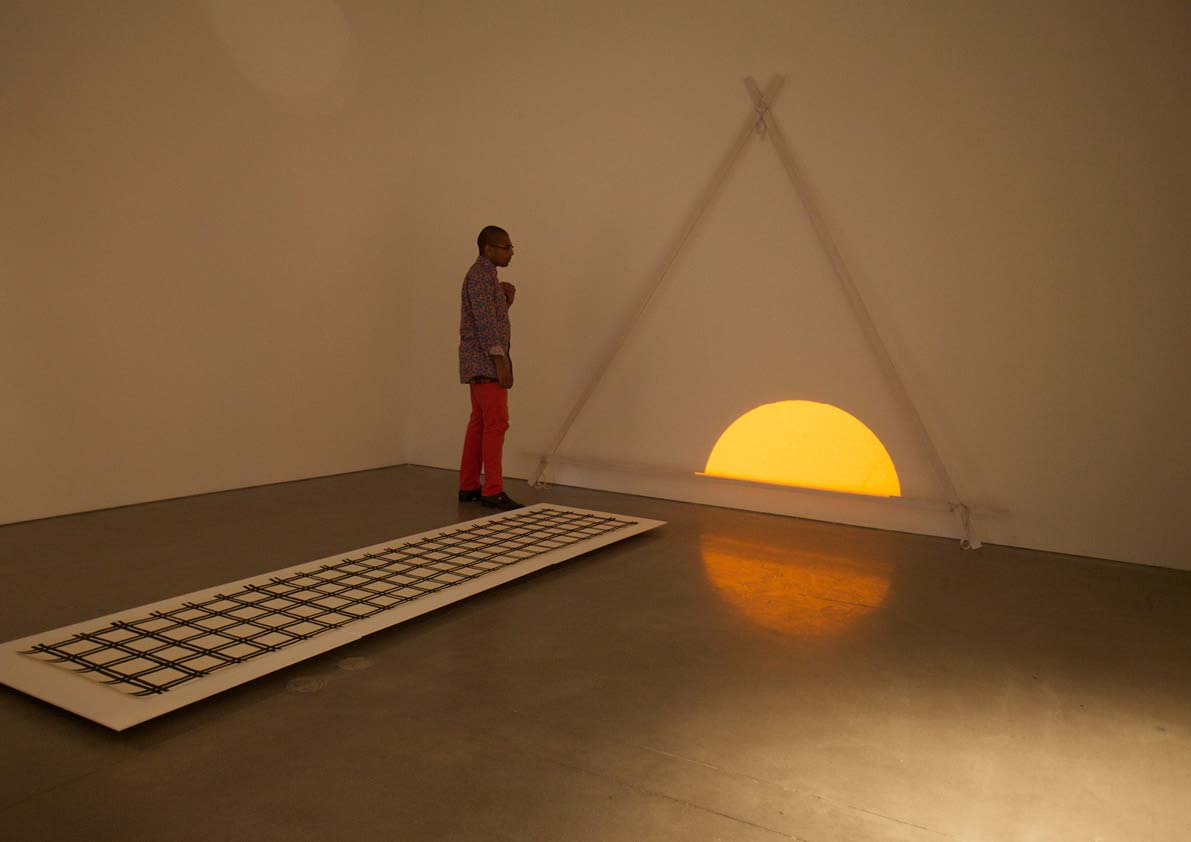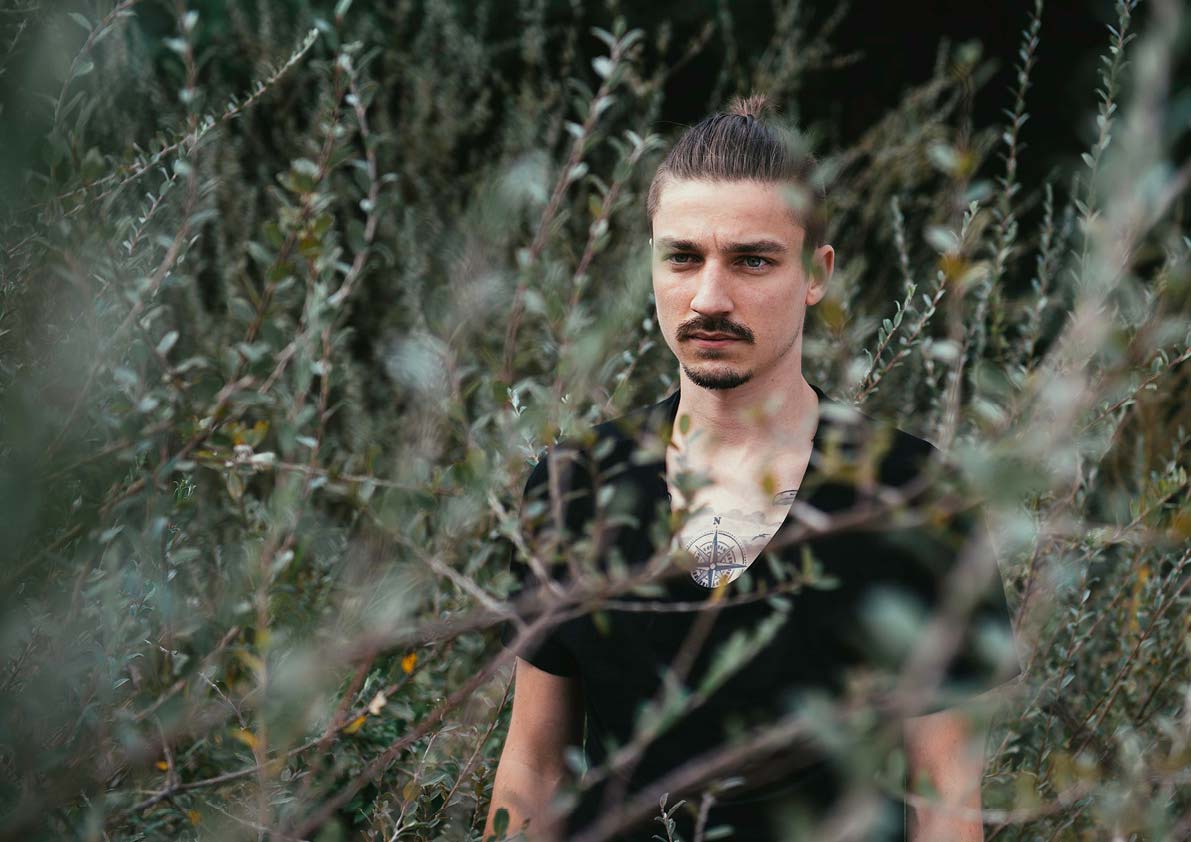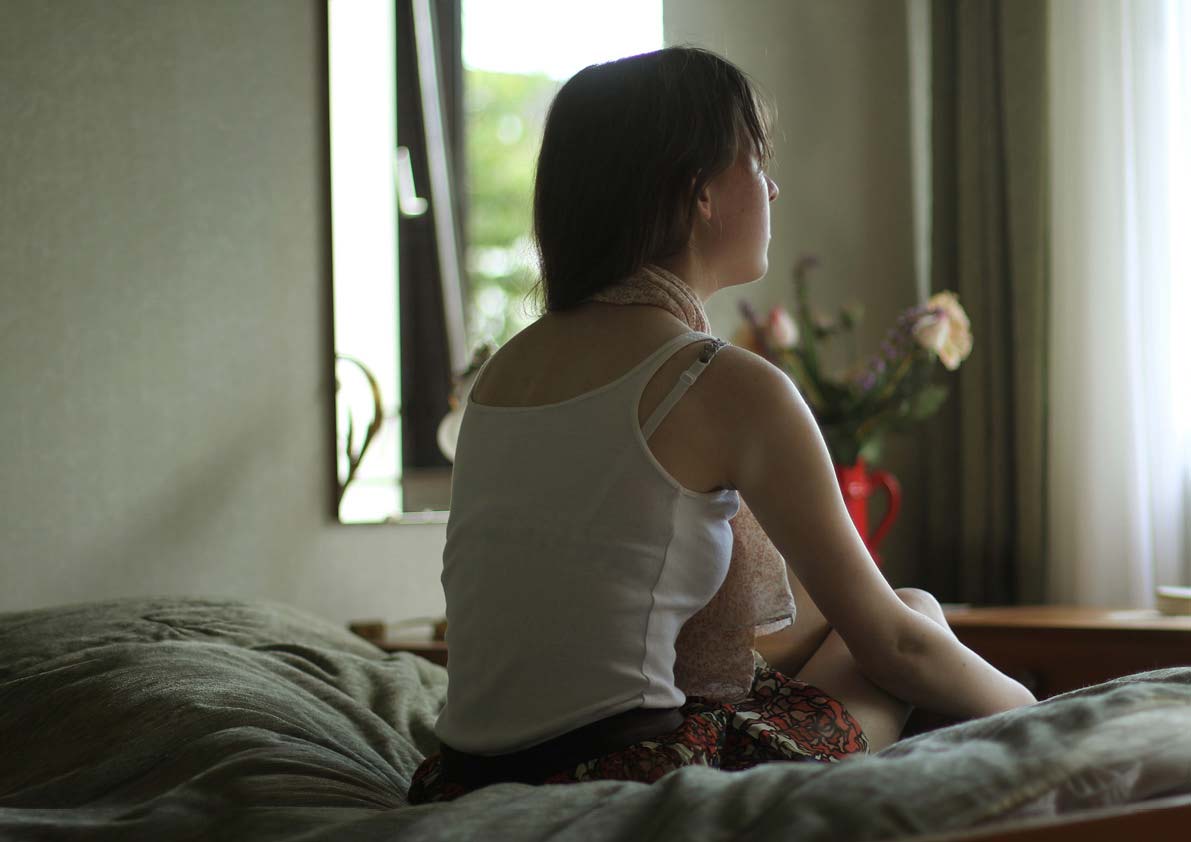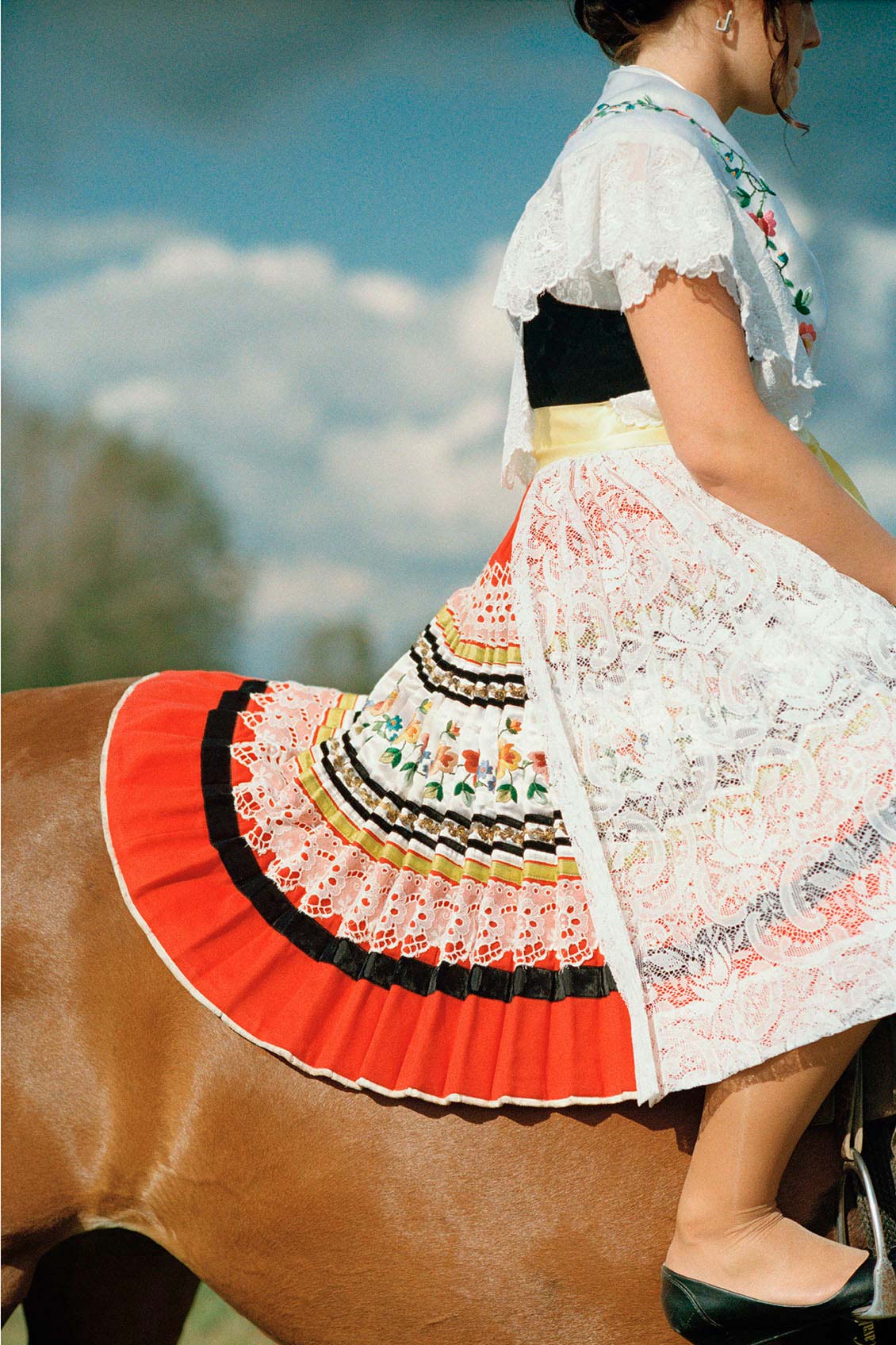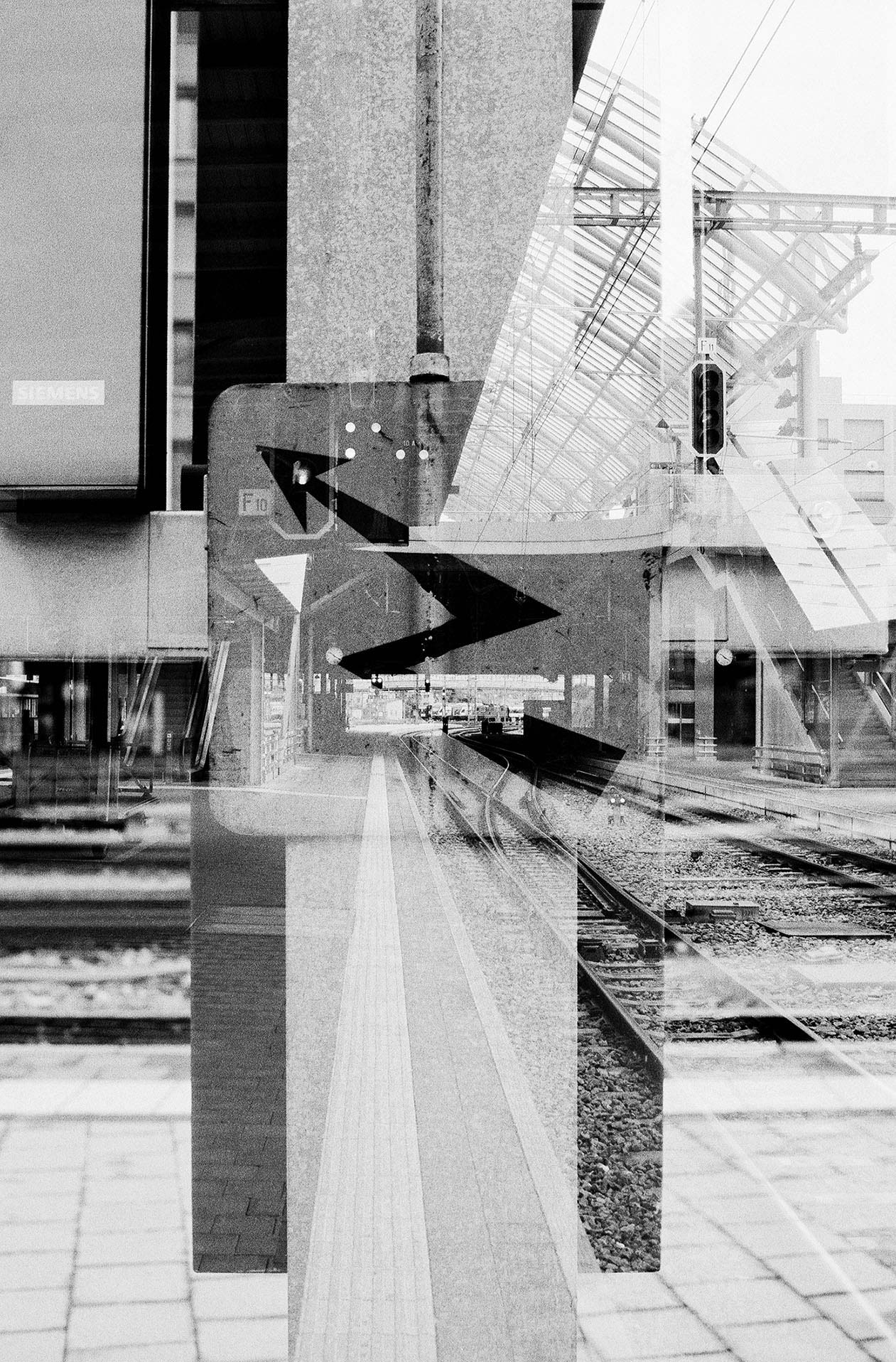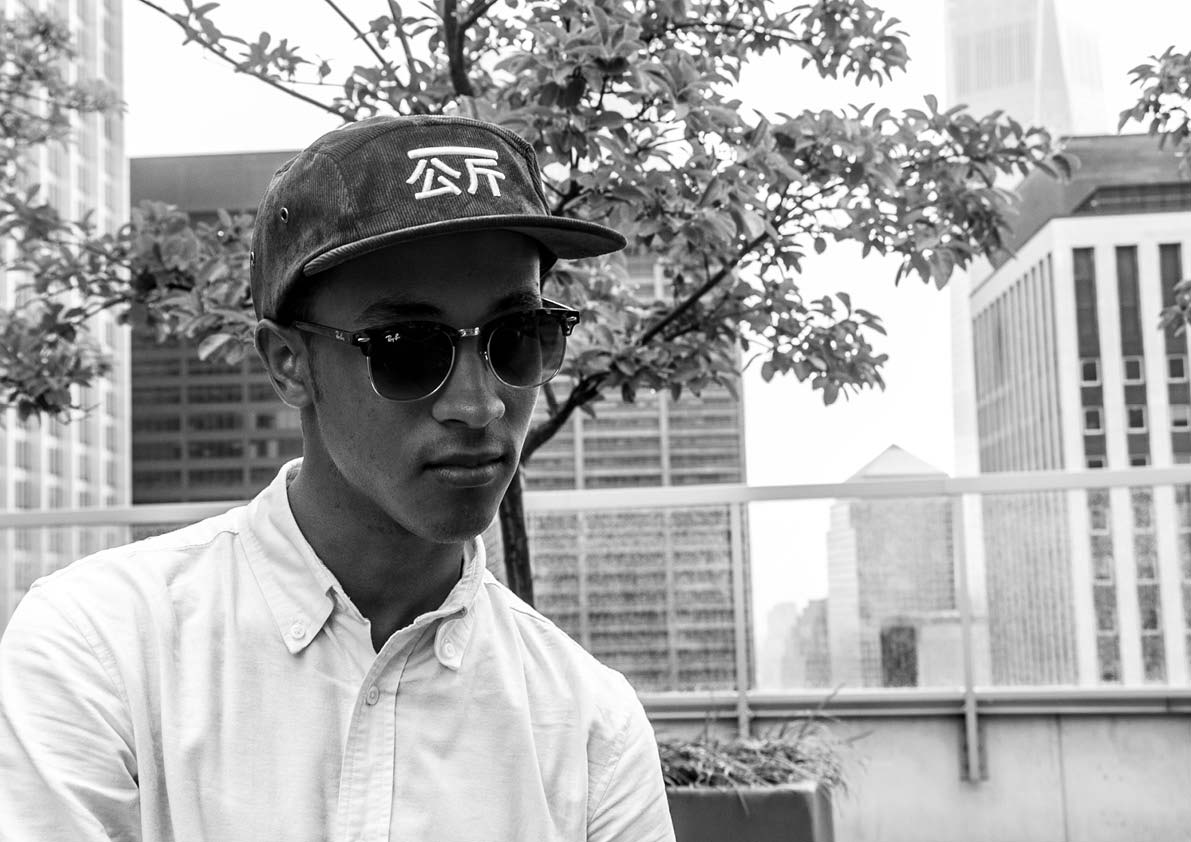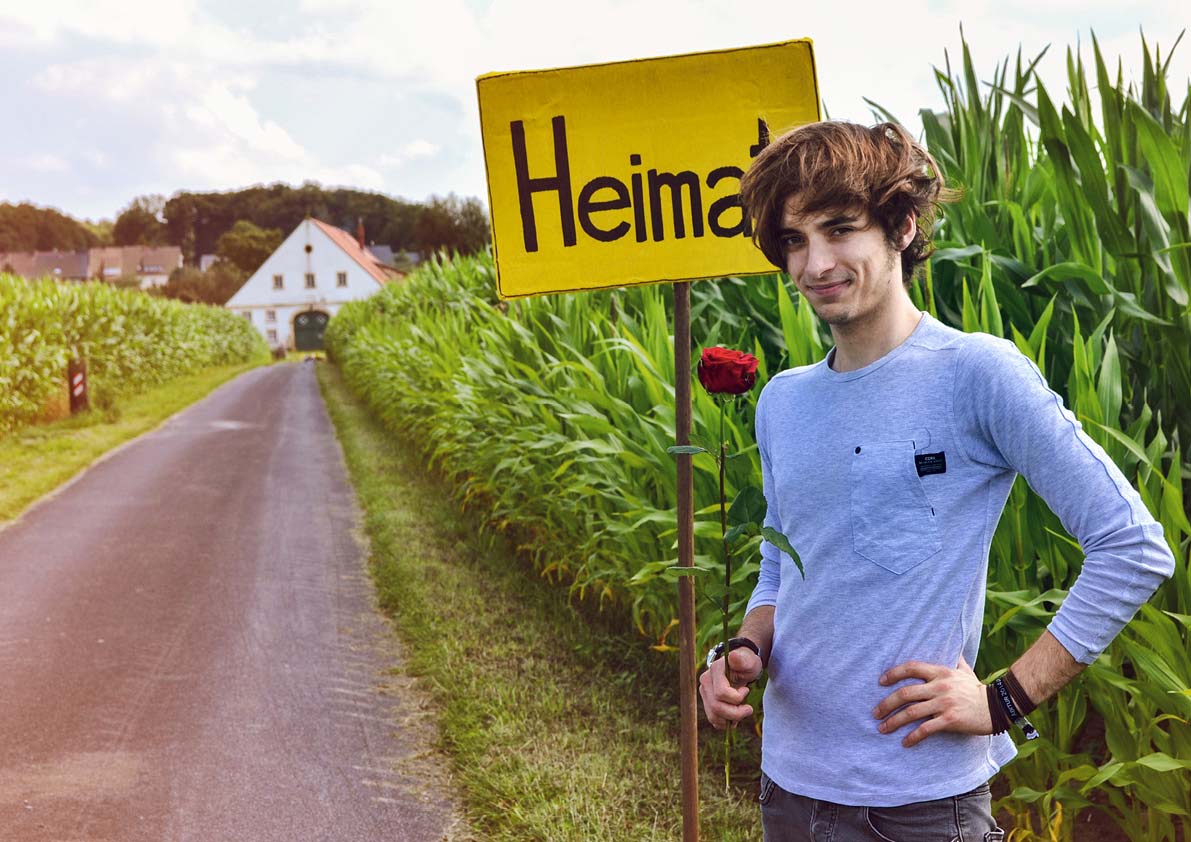Lukas Leister
Submission — Lukas Leister
Das Meer
31. August 2014 — MYP No. 15 »Meine Heimat« — Text & Foto: Lukas Leister
„Schon wieder nasse, sumpfige Füße.“
Als sie nun dort oben stand, erinnerte sie sich an das, was sie vor Jahren in dem zerfledderten Taschenbuch gelesen hatte. Alles hier erinnerte sie daran, erinnerte sie an ihr früheres Zuhause. Damals war Heimat für sie etwas, was sie nie richtig erklären konnte; Orte und Zeiten in ihrer Kindheit, an die sie als Erwachsene nur noch vage Erinnerungen hatte. Geborgen und sicher hatte sie sich damals gefühlt. Mit jedem Jahr, das sie älter wurde, hatte sie vergebens versucht, dieses Gefühl festzuhalten, es unter keinen Umständen gehen zu lassen.
Jahre später war jedoch nur noch wenig von dem romantischen Idyll der Heimat geblieben. Die Sicherheit war der Unsicherheit gewichen, das Heimliche dem Unheimlichen. Heimat war fortan nur mehr ein Wunschort der Zugehörigkeit, den sie auf keiner Landkarte hatte finden können.
Als sie nun hier oben stand und auf das Meer schaute, wurde ihr bewusst, dass sie ihre Heimat die ganze Zeit bei sich hatte, so wie sie es damals gelesen hatte.
„Mein ganzes Leben nasse, sumpfige Füße.“
Zitate: Rinke, Moritz, Der Mann der durch das Jahrhundert fiel, 1. Aufl., Köln: Kiepenheuer & Witsch 2011
Lukas Leister ist Fotokünstler und lebt in Ingolstadt.
Ales Tvrdy
Submission — Ales Tvrdy
Picturesque Sceneries
31. August 2014 — MYP No. 15 »My Homeland« — Text & Photo: Ales Tvrdy
Slovakia, my country of birth…
21 years ago Czechoslovakia was divided into two separate countries – Czech Republic and Slovakia. The latter I call home and it is where I grew up.
It is a country full of contrasts. There is not a single Slovak, who would not be familiar with our greatest pride – High Tatras. Every year this beautiful and often untouched nature fascinates many visitors from all over the world.
Besides this majestic masterpiece that only the nature itself can create, many people overlook the decayed buildings, whose faded fame borders with the tourist trails. These were built here by the comrades of the past regime and many of them are losing their struggle with time. Until when? The mountains are really beautiful but beneath them it seems as if the Slovak nation cowers and waits until they can rise.
The country is full of folk traditions, habits and monuments which stretch back to the far past. Many regions still preserve these folk traditions so that they can be passed from generation to generation. In every region the local people have their own folk costumes with typical patterns and design particular for them. Very popular are also the folk songs and dances and it is not an exception if these are performed on various local or world-wide events.
Halušky (national food), Kofola (non-alcoholic beverage), Horalky (snack) and Slivovica (strong alcoholic drink made of plums) are snacks and drinks which are known by every Slovak. It is not an exception if those who live abroad have them sent from Slovakia.
It seems as if the country with the red communistic past is only dressed into a blue European rich evening robe. More developed west with its centre in the capital Bratislava, whose glitter mirrors on the surface of the river Danube contrasts with the „hunger valleys“ in the central or eastern Slovakia. Until today no one out of the most powerful men in country was able to connect these parts with modern infrastructure. Maybe this would invite the investors and it would lower the gap between the regions. But until now all we have are the campaign promises, which faded just as their slogans on billboards.
The night life of the capital can be compared with the more modern cities of the Western Europe. Stylish clubs or bars lure many foreign tourists. The prices are not very suitable for the locals but the foreigners are just wondering how cheap everything is. Who knows if they would think the same if they had an average monthly income of 800 Euros (and many people have half of it!)
On the streets we can daily see luxurious cars for tens of thousands of euros made by well-known car manufacturers. Beautiful and modern shopping centres are growing one after another. But old vehicles of public transport which belong more to the second-hand shop rather than to the street are driving past them. They transport many local inhabitants or people from other parts of Slovakia who came here for better paid jobs. Often they stop at one of the state hospitals that look like the time stopped. I do not remember the maternal hospital where I was born but I am pretty sure that if I would go there today, it would be pretty much the same.
The complete opposite are the lonely settlements, where the chief shepherds, only loyal to their herd, live solitary and many times not an easy life. However, it is hard to say which lifestyle is easier. Stress and pursue of greater income in a city or a hard work for less money but in a beautiful environment surrounded by beautiful nature.
Many clever and talented people who are world experts at their field were born in Slovakia. Mostly in IT many young people are successful and they are wanted by the biggest world companies. It is shame that they cannot use their talent at home and it is one of the reasons why mostly young people leave the country that raised them and they achieve success somewhere abroad. Well, we cannot blame them. For the salary that they would get here they would barely earn a living and I speak nothing of starting a family.
Sadly also many individuals who live at the expense of the others and they take advantage of the system live here. This reflects on the high unemployment. Perhaps the biggest problem are the Romani people (gipsies). Their settlements can be found all over Slovakia where they live in catastrophic conditions. It is hard to integrate them into society when many of them cannot make it to the fifth grade of the primary school. Often they are illiterate and it is very difficult to find a suitable job for people like this. Well, sometimes even highly educated people only find job which is deeply beneath their level of skills. But they have to live from something.
Slovakia is indeed a beautiful country full of picturesque sceneries, folk customs and traditions. Many nice moments can be experienced there. But the people who live there definitely deserve more. I believe that the other countries whose standards we want to reach, will be the example for us.
They will not just stay the gold foil on the mouth of those who are regularly every four years competing in the political campaigns.
Ales Tvrdy is a 29-year-old Photographer, Traveler and Blogger living in Bratislava, Slovakia.
Daniel Fuchs
Submission — Daniel Fuchs
Schulterblick
31. August 2014 — MYP No. 15 »Meine Heimat« — Text & Foto: Daniel Fuchs
Kleine Tannenwäldchen, ein Bach am Straßenrand, der sich durch das Tal schlängelt, nur eine Straße, die nach der großen und einzigen Kurve den Namen wechselt. Faustball, Feuerwehrfeste und andere befremdliche Dorfzeremonien. Das war und ist das, was man meine Heimat nennen könnte.Nicht die romantische Erinnerung an eine unbeschwerte Jugend, die sowieso nie so stattgefunden hat, sondern die einfache Bilanz.
Als Heranwachsender nicht gerade ein Paradies der Möglichkeiten. Doch das schweißt zusammen. Aber auch nur solange du den gleichen Umständen ausgesetzt bist. Einmal das Bein aus diesem Karussell herausgestreckt, reist es dich aus dem Sitz. Dann liegst du da draussen auf dem Boden und alle schauen sie dich an, als wolltest du ihnen ihre Fahrt vermiesen.
Heimat ist für mich kein geografisch definierter Ort. Sie reicht nicht von der Haustüre zu exakt diesem Baum. Das ist eine Vorstellung, derer man sich gerne bedient, um sich nicht komplett verloren zu fühlen. Doch manchmal sollte man diese Vorstellung auch einfach hinterfragen. Dann heisst es den Rucksack zu packen und los zu fahren.Von der Sicherheit hinein in den Nebel der Ungewissheit.
Daniel Fuchs ist 27 Jahre alt, studiert visuelle Kommunikation und lebt in Pforzheim.
Amy-Claire Huestis
Submission — Amy Claire Huestis
Inner Homeland
31. August 2014 — MYP No. 15 »My Homeland« — Text & Photo: Amy-Claire Huestis
My scope broadens when I find myself in obscure places.
At the same time I’m headed in the opposite direction, toward
an inner homeland.
Moving to a completely new city, I went on a quest for my own “homeland,” a series of experimental pieces intended to provoke a closer connection to a sought-after primary home-place.
I made a triangle form out of wood and felt, and called it “screen”.
In my animated light installation, Sun Transit, an orange orb slowly rises through a triangular sculpture.
Inside the triangle, a golden orb makes its journey, rising slowly.
These simple geometries of triangle and circle are icons for shelter and sun – the rising orb, seen from inside a nomadic tent structure, enacts the slow passage of time.
A sheer curtain, a veil, blocks the rest of the gallery. The poet enters through the veil. He watches the triangle screen, the patterns, the disk turning in the projector, the circular movement of light, the circle passing through the triangle.
In Arabic he recites:
“Halt you both that we may weep from memory of a love and an abode
In the winding of the dune between Al-Dakhuul, then Hawmal,
Then Tuudih, then Al-Miqraat, their traces not having been erased,
In what the wind wove from a south and a north…”
Together we are in a place of new understanding. The triangular screen becomes the opening of a tent. From within the tent we watch the sun move from South to North.
For the poet, the circle illuminates the ancient poem.
For my part, I feel exalted by what the poem has released in the room.
Rewarded by my inner-outer travels, I see how truth appears in obscure places.
My journey has something to do with history – an attempt to understand the past,
to illuminate ancient patterns.
I sit inside my “tent”, my native “home” space, where I contemplate the journey.
My inner homeland is not far away. I sense it, smell its shores.
Amy-Claire Huestis is a 42-year-old visual artist living in Los Angeles.
Christopher Müller
Submission — Christopher Müller
Du fehlst
31. August 2014 — MYP No. 15 »Meine Heimat« — Text: Christopher Müller, Foto: Franz Grünewald
Der Ort, an dem wir gemeinsam aufgewachsen sind. Daheim. Zu Hause. Unsere Heimat.
Doch heute ist alles anders. Heute ist es der Ort, an den ich immer wieder zurückkehre. Manchmal häufiger, manchmal weniger häufig. Aber es fühlt sich nicht mehr an wie meine Heimat. Denn Du fehlst. Du, der den Ort zur Heimat gemacht hat. Zu unserer Heimat.
Aber Du hast mir vieles dagelassen, ich habe viel von Dir lernen dürfen. Vor allem den Grundsatz, nach dem Du lebtest:
„Forgive, forget!“
Vergeben und vergessen. Anderen für Fehler und Boshaftigkeiten zu verzeihen. Einfach zu vergeben – ohne etwas einzufordern. Die Menschen so zu nehmen, wie sie sind. Deren Entscheidungen zu akzeptieren.
Ich versuche, es zu adaptieren. Jeden Tag ein Stück mehr.
Du fehlst. Du fehlst unglaublich. Deine leuchtenden Augen, wenn wir uns sahen. Deine für mich immer weit geöffneten Arme. Aber ich habe Dich immer bei mir. Sichtbar und unsichtbar. Solange ich lebe. Bis ich zu Dir komme. Das gibt mir Kraft.
Und es nimmt mir die Wut.
Christopher Müller ist 25 Jahre alt, Student und lebt in Berlin.
Charlotte Clara
Submission — Charlotte Clara
Filmstills
31. August 2014 — MYP No. 15 »Meine Heimat« — Text & Foto: Charlotte Clara
“Heimat, die [Substantiv]: Land, Landesteil oder Ort, in dem man (geboren und) aufgewachsen ist […] (oft als gefühlsbetonter Ausdruck enger Verbundenheit gegenüber einer bestimmten Gegend)“ (Duden)
Wenn ich das Wort Heimat höre, dann muss ich an das Haus meiner Großeltern denken, an deren Wänden das Wort Heimat so groß geschrieben scheint, dass es fast unübersehbar ist. Ich muss an die Sommerabende denken, an denen wir durch den Garten rannten; an die Morgenstunden, an denen wir uns mit Omas Sachen verkleideten, bevor wir zum Frühstück kamen; an jene Wintertage, an denen wir Schneemänner bauten und ihnen Namen gaben.
Für mich ist Heimat an den Orten, an denen ich an meine Kindheit erinnert werde. Es ist das bedrückende Gefühl der Nostalgie, die in diesen Räumen schwebt. Ich widme diesem Ort eine ganze Serie und nenne sie Filmstills – jedes der inszenierten Standbilder inspiriert von Erinnerungen.
Doch oft wird das Wort Heimat wie Zuhause benutzt. Beide Worte tragen im Englischen das gleiche Wort, nämlich home. Zuhause ist für mich ein Ort der Wärme und Geborgenheit. Man kann sich ein Zuhause überall bauen, egal wo man hin geht. Es ist der Ort, an dem man sich wohl fühlt.
Wohingegen eine Heimat uns gegeben wird. Man wird dort geboren und wächst dort auf. Eine Heimat kann man sich nicht aussuchen. Sie wird immer da sein, um uns daran zu erinnern, wo wir herkommen und als wer wir geboren wurden.
Charlotte Clara ist 17 Jahre alt, Schülerin und lebt in Wiesbaden.
Yvonne Most
Submission — Yvonne Most
Schwarze Löcher
31. August 2014 — MYP No. 15 »Meine Heimat« — Text & Fotos: Yvonne Most
Heimat ist ein Ort, an dem ich mich nicht erklären muss. Die Worte Verbundenheit und Geborgenheit blühen auf.
Ich kann an die Erinnerungsorte meiner Herkunft zurückkehren. Heimat als Ort, Heimat als Gefühl – aus welcher sich Identität und Abgrenzung bildet.
Ich habe Menschen getroffen, die diesen Ort ihrer Kindheit und Jugend nicht wieder aufsuchen können. Denn Orte verschwinden, Orte werden weggebaggert, Braunkohle wird gefördert.
Meine Auswahl an Portraits der Trachten (2011-2013) zeigen ein Auslaufmodell vom Miteinander der Generationen, in der Niederlausitz, in Brandenburg.
Durch viele Besuche dieser Gegend ist sie zu einer zweiten Heimat geworden. Durch Mitgefühl, durch Interesse an einzelnen Menschen, durch das Unverständnis, warum heute immer noch Menschen ihre Heimat auf diese Weise verlieren. Ich habe mich für die Betrachtung der Sorben entschieden, weil fortwährend ihr Lebensraum bedroht wird.
Den Sorben als kleine ethnische Minderheit war es bis in die 60er Jahre des vorigen Jahrhunderts gelungen, ihre Eigenständigkeit in Form traditioneller Bräuche und Trachten zu bewahren. Dann kam die Braunkohle, bzw. der Braunkohleabbau. Den Verlust dieser ehemaligen sozialen Gemeinschaft bezeichnet ein sorbisches Sprichwort, das für meine Fotoarbeiten wichtig ist „Gott hat die Lausitz erschaffen, der Teufel die Kohle darunter gelegt.“
Die Serie zeigt das Übertragen von kulturellem Selbstbewusstsein über Generationen hinaus. Ich möchte zeigen wie wichtig es ist, Kulturgut zu bewahren. Die leergebaggerten Löcher in der Landschaft kann man nicht begreifen, bevor man nicht an dessen Rand steht und sich vorstellt, wie viele Menschen und Häuser dort einst standen. Schwarze Löcher, soweit kein Auge reicht. Hinter der Idylle der Trachten steht mehr.
Yvonne Most ist 32 Jahre alt, Fotografin, Dozentin, Kulturmanagerin und lebt in Halle an der Saale.
Akzidenz
Submission — Akzidenz
Animal Instinct
31. August 2014 — MYP No. 15 »My Homeland« — Text: Cristina Bove & Philipp Bolthausen, Visual: Philipp Bolthausen (Akzidenz)
… a lifetime spent searching for a place to rest, to feel at home in, where inhibition and reticence are shed; a corner in which to flee to when in need of comfort…
We are wandering souls continuously on the greatest quest – to belong, to find the eluding idyllic resting space. Gliding, stumbling, running, engaging and backtracking we move through being; the nomad in us searching for that transient space, feeling or state; leaving fading footprints that prove the reality and fleetingness at once.
It is a simple game we play with ourselves, stemming from the primal instinct of fight or flight; we live for the unknown not the known, for guilt vs. pleasure for delirium vs. sanity. The unexpected that lies in the invisible future is what spurs us to flirt with the intended, to entice it, to play with it. Curiosity drives us to explore, it convinces us that the attractions we may feel are worth pursuing; we become our own vessel for the uncharted, always in motion, enrapturing ourselves with our surroundings… Then why is it that our will to probe and reach beyond the horizon is powered by the need to belong? A contradiction in and of itself, yet a truth notwithstanding the fact that it is impossible to generally define the notion of belonging – the search is confidential and partly subconscious, despite the common denominator is the need for to achieve Heimat.
Home is complex for it – the essential concept – is fluid, malleable, and delicate; it is ever-changing as the blocks that construct our ‘perfect home’ transform and evolve with every choice and step we make in the journey. It is our need for the new, the desire to experiment, the inherent not wanting to fail yet yearning for experience that redefines our every move. It is through this continuous conflict within us that we are able to define our own notion of home/Heimat over time.
Surrounded by people, objects, and the monsters we create ourselves, the animal instinct prevails and we are driven by the indiscernible force to discover, to hunt, to prey on our own future; we self inflict our own reality defining home as our transitory safe haven from one moment to the next. Home – whether physical or abstract, whether conscious or subconscious – is never static yet is always complete in its incompleteness. We will always belong to the entirety that is life; in each precise moment it is a gesamtkunstwerk but it is dynamic, and therefore as soon it is whole it is already lacking as time has passed and the search endlessly continues.
Philipp Bolthausen is a photo artist living between New York and Paris.
Jarrell Chalmers
Submission — Jarrell Chalmers
Mustache And High Heels
31. August 2014 — MYP No. 15 »My Homeland« — Text: Jarrell Chalmers, Photo: Michael Stein
New York is more than just a place, it is an idea. New York is taking the 2 Train to Canal to find the perfect sunglasses.
New York is showing up 15 minutes late to the show and fixing your hair right outside of the venue. It is a mustache in Williamsburg and high heels on the upper west side.
New York is sneaking into fashion week and greeting celebrities you only dreamt of meeting. It’s the underground warehouse party in Brooklyn you promised your mom you wouldn’t go to.
But most of all, New York is an opportunity that you cannot find anywhere else in the world.
Jarrell Chalmers is a 21-year-old Fashion Designer and Blogger living in New York.
Valentin Scharf
Submission — Valentin Scharf
Auf der Suche
31. August 2014 — MYP No. 15 »Meine Heimat« — Text & Foto: Valentin Scharf
Ich bin auf der Suche nach einer Neuen.
So hart es sich auch anhören mag, aber meine Alte muss ich leider verlassen. Meine Schulzeit ist vorbei und jetzt ziehe ich um. Ein neues Kapitel meines Lebens wartet auf mich und jetzt bin ich offen und bereit für was Neues.
Aber zurück zu ihr.
Schön muss sie sein, auf eine natürliche Art und Weise schön, so dass ich meine Freunde auch mal einladen kann und auch sie begeistert von ihr sind. Sie muss dieses gewisse Etwas haben. Ich will mich wohl fühlen bei ihr, will ganz ich sein können und stolz darauf sein, mit ihr zusammen ein Leben zu führen. Oder wenigstens einen Abschnitt meines Lebens. Klingt vielleicht kitschig, aber so ein kurzes Affären-Ding soll es nicht sein. Ich will schon etwas mit Perspektive.
Da kommt es mir auch gar nicht so sehr auf das Äußere an, sondern vielmehr darauf, wie wir harmonieren und inwiefern sie mir Raum für meine eigene Entfaltung gibt.
Zusammen mit ihr will ich großartige Momente erleben, durch sie neue Menschen kennen lernen und mich selbst weiter entwickeln.
Natürlich kann sie meine Familie niemals ersetzen, denn das Gefühl, was ich im Beisein meiner Eltern, meiner Schwester und mit Omi und Opi habe, das kann man nicht einfach duplizieren. Aber sie kann mir dafür etwas anderes geben. Vielleicht das Gefühl von Freiheit und Unbeschwertheit, von Unabhängigkeit und Lebenslust.
Ich glaube nicht, dass es „DIE EINE“ gibt im Leben, aber sicherlich gibt es solche, die perfekt sind für die momentane Lebenslage. Liebe auf den ersten Blick schließe ich da allerdings nicht aus.
Ich bin auf der Suche nach einer Neuen.
Und ich weiß, ich werde sie finden.
Valentin Scharf ist 18 Jahre alt, Schüler und wohnt in Melle.
